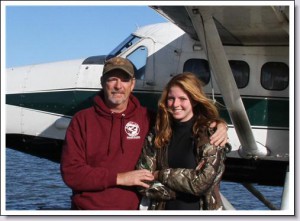
Tom Harrison & daughter Rebecca
Guest Post by Tom Harrison
Caribou Hunt Sept 17-24, 2011
Webber’s Lodges
Churchill, Manitoba
Rebecca age 13
Tom age 54
On Saturday, September 17, 2011, my daughter Rebecca and I flew from Raleigh to Minneapolis and then on to Winnipeg on Delta Airlines. After clearing Canadian customs we checked our two bags and gun case in at CalmAir for our three hour flight to Churchill.
We were met at the airport by 19-year-old Karli Reimer, the granddaughter of Doug Webber, who owns Webber’s Lodges. We also met the other folks we would be sharing the hunting camp with:
- Mike and Susan from Dresden, Maine
- Matt from Vermillion, South Dakota
- Darren from Minot, North Dakota
- Greg from Marietta, Georgia
- Allyn from Camden, Arkansas
- Jason from Colorado
Rebecca and I spent our first night in Manitoba at an eclectic little hotel called the Lazy Bear Lodge. There was only one other couple staying there and the hotel was locked when we got there. We had to call the owner to open up and check us in! Although the rooms were tiny, it was constructed entirely from logs from Canada’s Boreal Forest. It was really beautiful.
The next morning we awoke to cloudy skies and made an aborted flight to our camp at Schmok Lake. Only 20 minutes into the hour and 15 minute flight we had to turn back due to a low ceiling fog. On the way back I spotted a polar bear foraging on the mud flats at low tide in the early morning sun. I got some pretty good shots from the air with the bear’s reflection mirroring his movements on the wet mud.
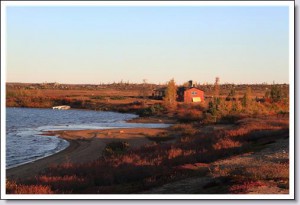
Schmok Lake Caribou Camp
Once we arrived back at Landing Lake, Karli gave us a ride back to town where we checked in at The Aurora Inn, (where everyone else was staying). The rooms were enormous with an upstairs bedroom, a downstairs kitchen and living room with two satellite TVs. Though the Aurora lacked the charm of the Lazy Bear, it was sooo much more comfortable and was also $100 per night cheaper!
After checking in, we all went to a late breakfast at the Seaport Hotel’s restaurant. It was Sunday and everything else was closed, so Rebecca and I played a Scrabble-like game called Bananagrams on the front porch at the restaurant to pass the time.
The weather never improved enough to make the flight, so Karli took us for a short sightseeing trip to St. Mary’s Point where we saw another polar bear. This one was swimming around the point close to shore and then alongside an incoming freighter, before journeying across the Churchill River to the other side. Karli then took us to the “Bear Jail” for bad actors and finally to a spot south of Churchill, where we saw another polar bear!
The next morning, we awoke to intermittent showers and a low gray ceiling, but the forecast was for improved conditions in the afternoon. We had breakfast at Gypsy’s Bakery and remained on standby.
I was so enthralled with the bears the day before that I called North Star Tours and booked a short polar bear tour for $50 each. Seven of us went along and our guide Rhonda did an outstanding job. We saw another half dozen polar bears! I got some great close-up shots of one particular bear Rhonda called “Scary Bear”, that at one point walked up to our vehicle. Seeing these magnificent animals on the colorful fall tundra was a highlight of the entire trip. As a matter of fact it was a specific answer to prayer.
I had been praying before our trip with Rebecca that we would see polar bears, the Northern Lights and harvest some nice caribou bulls. So far, so good. I was actually glad we were weathered in at Churchill, as it gave us the opportunity to see nine polar bears!
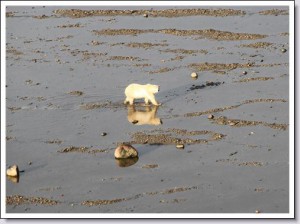
Polar bear on the mud flats at low tide
While we were still looking at bears, I got a call on my cell phone from Karli that conditions at Schmok Lake looked good and to return to the hotel to grab our luggage so we could fly to camp. Great news indeed! We had now lost 24 hours of our 4-day hunt.
It was a smooth flight to camp on a monochrome cloudy day. There was one point in the flight where our pilot contemplated turning around because of low clouds mixed with fog banks, but he zigzagged his way to Schmok Lake.
Because of the pilot’s uncertainty of actually making it to camp without being weathered in, he only let us bring our essential gear – the clothes we were wearing, gun and ammunition. That way if he had to land on a small lake to wait for improved weather, he would have a shorter take-off with less weight.
We landed on Schmok Lake and taxied to camp where another eight or nine hunters were waiting to fly out with their trophies. They had all tagged out on caribou and had lots of encouraging words for us as we worked together like a bucket brigade – first unloading our gear from the plane and then loading their gear for the outbound flight back to Churchill.
Introductions were made to the camp manager, Kent, his dog Ruger – a big friendly chocolate lab, and the rest of the guides. Rebecca and I had a room to ourselves in the back corner of the cabin with bunk beds, but everyone shared one bathroom. Unlike many remote camps, we actually had flush toilets instead of an outhouse, so we were grateful.
After settling in, we grabbed our rifles and one by one began sighting them in. Rebecca’s Kimber .308 was right on the money. My Winchester Safari Grade .270 was shooting about 2” low, but as long as I knew where it was shooting, I would know where to hold when aiming at a caribou, so I didn’t adjust my scope. I had made notes for both of us on the bullet drop of each of our rifles at various ranges.
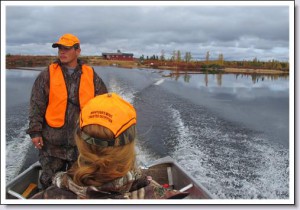
After sighting the rifles, we were off with our Soto/Ojibwe Indian guide, Robert Flatfoot.
Rebecca and I were introduced to our guide, Robert, who was a 36-year-old Soto/Ojibwe Indian from the Duck Mountains in southwestern Manitoba. We had a bite to eat and then got into a small aluminum boat to cross to the other side of the lake to a lookout on a small knob on what Robert called “the killing fields”, because of his success there. After a 15-minute boat ride, it was another 15 minutes or so to walk across the spongy tundra.
The tundra was a kaleidoscope of colors – light green reindeer moss, bright red blueberry bushes and small willows, yellow grasses and orange lichens. The scattered green spruce contrasted with the golden tamarack trees. We could hardly take a step without putting a foot on ripe blueberries, cranberries or black currants.
For me, being back on the tundra caribou hunting in Canada brought back a flood of memories of fishing in the sub-arctic of the Ungava Bay Region of Northern Quebec many times as a boy, and of caribou and moose hunts in Alaska. It was exciting to be embarking on another tundra adventure and especially to be sharing it with my daughter Rebecca for the first time.
On the hike in, we saw a small group of caribou and passed up a medium size bull skirting a nearby lake. Once at our lookout hill we could see small groups of caribou moving here and there. It was already late in the afternoon and we were supposed to be back at camp before dark at 7 p.m. but Robert saw a nice bull bedded down on a distant hill further out in the tundra. Even though it would possibly mean crossing the lake in the dark, he wanted to at least get closer to get a better look at him. As we did, Robert thought this was a good first bull for Rebecca, so we got as close as we could, which was still over 300 yards away.
Rebecca settled in, embracing her rifle, to take a shot. Her first shot spun the bull around, but she had to shoot him again to finish him off. Then we hiked up the hill to inspect her first caribou. It was a good first caribou. We would hold out for a monster before I would let her shoot her second bull.
Robert began butchering the bull and as he threw the quarters on a tarp, I boned them out to lighten the load going back to the boat. Rebecca proudly carried the caribou horns on her shoulders and Robert packed out the meat. I brought up the rear carrying the rifles and taking pictures. When we got back to camp it was almost 8 p.m. but no one seemed to mind. Mike’s wife Susan from Maine shot a very pretty bull with long tines on top. So we had made the most of a short afternoon hunt.
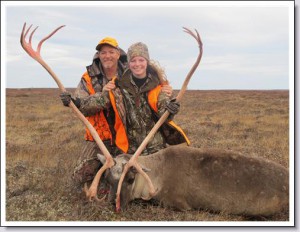
Rebecca shot one of her bulls at over 200 yards and the other at over 300 yards.
For the next two days we made the same trek to the killing fields, but Robert began calling it the “killing time fields.” Robert stood glassing all day long. I gave him my Leupold 17 power binoculars and Trigger Stick mono pod to rest them on. I used my 10 power Leica binoculars in a supporting roll but spent time with Rebecca picking blueberries, gathering firewood for a small fire to take the chill off and catnaps.
During our 2-1/2 days at this lookout we saw a total of perhaps 100 caribou and three wolverines. Mike and Susan had 15 wolf sightings. Robert found a wolf skull and some caribou antlers, but we never saw any wolves. We saw Sandhill Cranes, snow geese and Canada geese and listened to their cacophony while feeding on berries on the tundra nearby. We experienced a variety of weather, from a thick fog obscuring everything to light drizzle, high winds, and on the third afternoon…. sunshine for the first time since we arrived in Manitoba!
That afternoon we savored a spectacular sunset and I got some great photos of the camp, lake, and a stone marker called an Inuksuk, which has the likeness of a man and has been used for centuries by the Inuit people as trail markers.
That night the skies remained clear and I got up about midnight to go outside and sure enough, stretching across the northern skies and washing over the Big Dipper was a curtain of yellow-green light silently dancing across the sky! I was elated to witness the Northern Lights again for the first time in many years. I joyously dashed around camp to get different angles and props for camera shots. I had a new Canon 7D digital SLR camera with a 6400 ISO that I thought would take spectacular photos. I used a 15-second exposure time and a box of rifles bullets on a chair for a tripod. I also set my camera with a 2-second timer to eliminate the camera shake resulting from me pushing the shutter release. I got one fantastic photo using a set of caribou antlers in the foreground. I went back inside and woke up Rebecca and led her outside to see the Aurora Borealis for the first time. It was another answer to our specific prayer!
The next day was our last day of hunting and we needed to harvest nine caribou for everyone to get two apiece. While we were eating breakfast one of our guides spotted a herd of caribou coming into camp with a large bull amongst them. Greg and Matt were already tagged completely out. Jason and I were the only two hunters in camp who had not shot our first caribou at the point. Jason was a bow hunter and I suggested he plug this one with a rifle, being the last day and all. So he got set up on the shooting bench, but the herd had spooked and headed back where they came from. Jason and his guide took off after them and managed to get one of the bulls before they escaped about 15 minutes later.
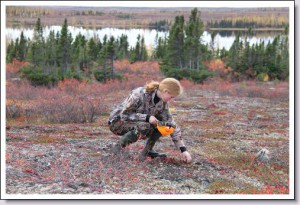
You could hardly take a step without putting your foot on ripe.
The wind had been blowing a gale all night and our boat was swamped on the beach in front of camp. We changed strategies and left camp on foot, walking several miles north. It was much rockier terrain and easier walking except in the low spots where we had to cross boot-sucking muskeg. We didn’t see any caribou on the way in, but once we achieved our vantage point, we immediately started seeing caribou scattered across the hilly tundra. We were confident we would be successful.
We had not been there long when I saw a big bull back to the north. Big caribou, like all big game, don’t need to be studied. You know immediately it’s a monster. This was a huge bull! It was the kind we had been looking for all week. So we took off on a forced march to get in front of the traveling herd, jogging when we could to cut the distance. I stopped in a grove of spruce and let Robert and Rebecca carry on across the open tundra so there was less chance of spooking them.
I watched the subsequent events through my binoculars. They had successfully got in front of them and waited in position below a brow of a bald hill. The caribou were going straight to them. Rebecca was down on one knee resting her rifle on the Trigger Stick monopod waiting for the caribou to come into sight. When they finally did, it only took one shot from her .308 at just over 200 yards to put the big bull down. The closer we got to the fallen monarch, the bigger his antlers got. They were extremely wide with long main beams. Rebecca was all smiles. We were all ecstatic! This was another specific answer to prayer!
We decided to leave Rebecca’s bull and continue to hunt while the caribou were still moving. It wasn’t long before Robert spotted a herd that had several bulls further north from our current position, so off we went. The caribou were approaching a small lake fringed with spruce and tamarack. We were not sure which way they would go around the lake, so I told Robert, “ Let’s try to get closer and ambush them before they make up their mind.” It turned out to be an easy stalk through the timber and we got extremely close to the herd. I looked them over and picked out the one I wanted.
As I looked through the scope I continually communicated the bull’s position in the constantly moving herd to Robert, so I stayed on the right one. At one point Robert saw the bull in the timber with us 10 yards away, but the bull spooked and trotted out onto the open tundra in preparation for flight from potential danger. When he stopped broadside at about 50 yards out, I dropped him. His rack seemed about half the size of Rebecca’s bull, but had a lot of character. I had no regrets and certainly didn’t want a bigger bull than Rebecca’s.
I looked seriously at another bull in the same herd as they ran and stopped, but at the last minute decided not to shoot. Robert quartered and boned out the meat while Rebecca and I hiked to a vantage point to look for my second bull, but we didn’t see anything.
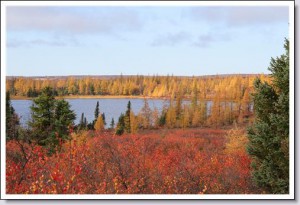
The golden tarmac trees reminded me of the quaking aspen.
Robert decided to pack my bull back to camp and get one of the other guides to help pack out Rebecca’s caribou while I continued to hunt on my own. Rebecca went back to camp with Robert. I found a good vantage point and tucked myself in best I could against a brain-numbing gale blowing across the open expanse of the tundra. Over the next three hours I saw several caribou but nothing worth going after.
Just as Robert and Eric came into view I watched a bachelor herd of three bulls about two miles away heading in my direction. I could see their antlers and white manes indicating mature bulls. I thought their antlers must be big, as I was able to see them so far away.
I met Robert and Eric at Rebecca’s caribou and told them about the three bulls. Eric said he would cape and cut up Rebecca’s bull while Robert and I made an end-run to cut off the three traveling bulls. It was another forced march, including more jogging. We got to them just as they crested a hill, but they were still about 500 yards away. To make things worse, they had seen us and had disappeared from sight on a trot.
So now it was on! Time was running out on the last day and the bulls were running to get away from us. We remained still until they went out of sight, then we took off jogging to get ahead to intersect them. The next time they came into view they were about 300 yards and stopped to look back at us. That was enough. One shot from my .270 and it was all over but packing it out.
Wow! What a day! Rebecca and I harvested three bulls and had seen more caribou than we had seen on our entire caribou hunt. We also walked more than we had all week put together, probably over 10 miles. I was grateful for Eric for helping to pack out the caribou, but it was a very satisfying hike back to camp that last afternoon. The sun was casting warm rays across the landscape; we had seen God’s glory displayed in so many beautiful ways; and we had so many prayers answered.
As I reflected on our trip I was very proud of Rebecca. Not only had she shot well and shot the biggest bull, she had never complained about anything. She hiked, jogged, and waited patiently day after day, sitting on the tundra or sitting by the fire (and had a great attitude). What’s more amazing is that she was on crutches with a sprained ankle when we left home! Rebecca was a pleasure to be with and everyone in camp was impressed with her manners and her character.
There were five more bulls taken that day. We finished with 17 bulls for 18 tags. Everyone was tagged out except Allyn, the bow hunter from Arkansas, who didn’t get his second bull. We enjoyed another spectacular sunset that evening as I hiked around camp taking pictures. I got some great silhouettes of hunters holding their caribou racks against the colorful sky behind them.

Inuksuk
The next morning I spent getting some final shots including another Inuksuk I found on the east side of camp. We took a group photo in front of the cabin holding our caribou antlers just as the Otter came careening in over the tree tops and landed in front of us. We were supposed to be on the second flight out of camp, but the pilot told us that we all had to leave together, so Rebecca and I had to rush into the cabin and pack with about 15 minutes notice.
The flight back was gorgeous! The sun illuminated the myriad of lakes, rivers, rocks, and caribou trails across the tundra. We could see geometric frost patterns on the tundra that resembled a giraffe’s skin. Once again we saw beluga whales as we crossed a portion of Hudson Bay.
Our sub-arctic hunting adventure in Canada had come to a storybook end. Rebecca said I was, “the best Daddy in the world”, and she would not have changed a thing. It doesn’t get any better than that!
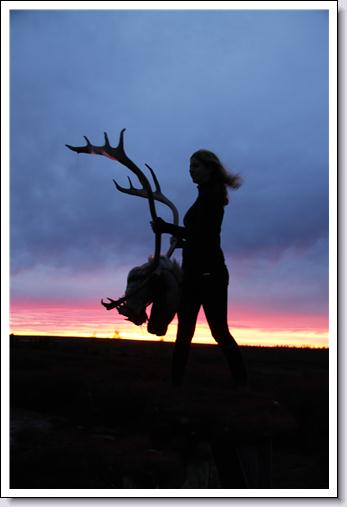
Caribou Antler Silhouette
“From the rising of the sun to the place where it sets, the name of the Lord is to be praised.” Psalm 113:3
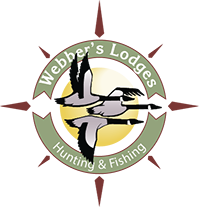
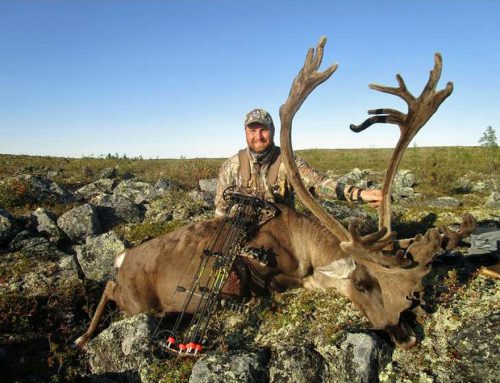
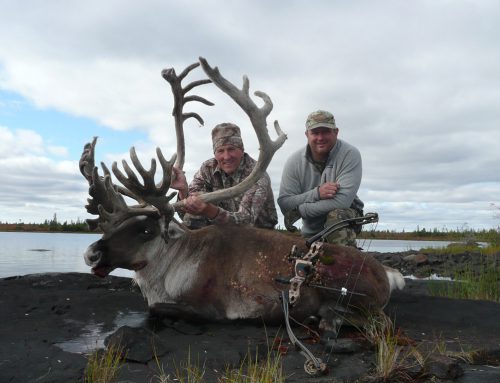
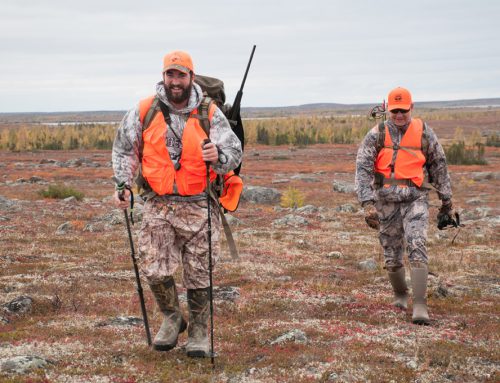
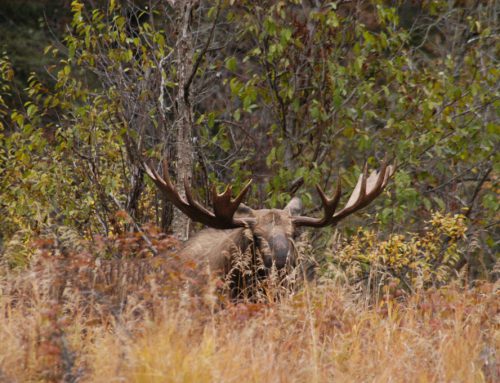
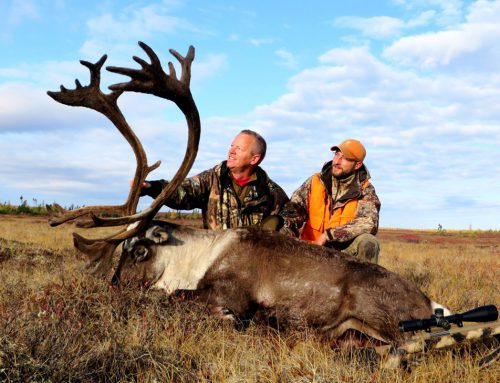
Leave A Comment